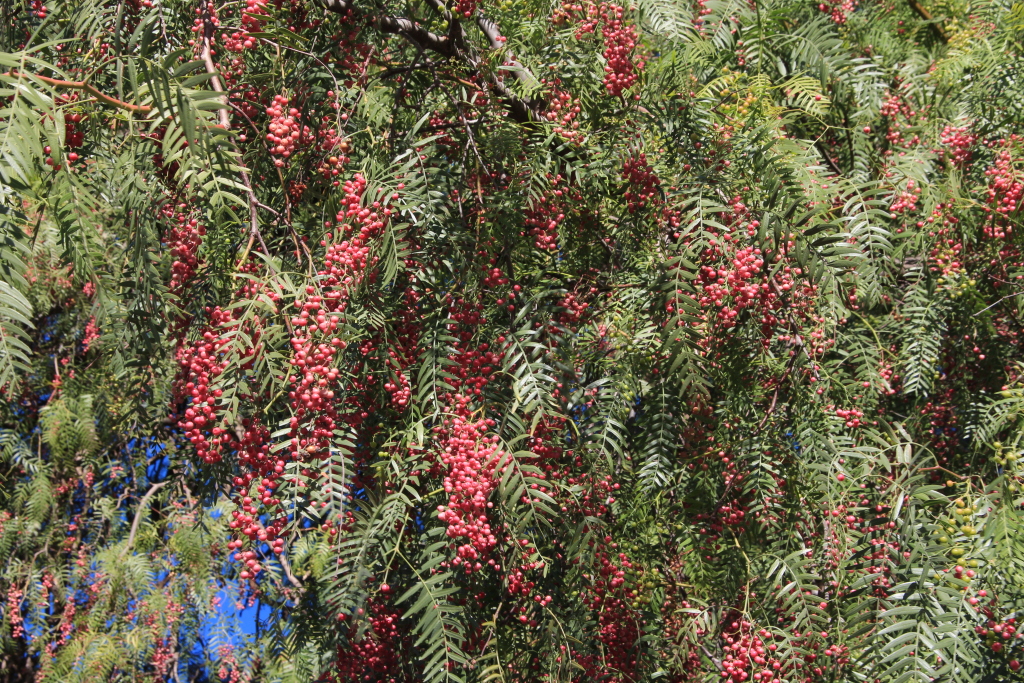Anacardiaceae
Trees, shrubs or woody vines. Leaves mostly alternate, usually pinnately compound or trifoliolate, rarely simple; petioles with resin canals; stipules absent or vestigial. Flowers in cymes, sometimes borne in complex paniculate inflorescences, unisexual (usually) or bisexual; sepals and petals 5 (rarely 3, 4, 6 or 7), or sometimes petals (and rarely, sepals) lacking; sepals usually partially fused; petals usually free; stamens commonly as many as or twice as many as sepals, rarely more or a single stamen, filaments usually arising outside the annular nectary-disc, anthers versatile, opening by longitudinal slits; ovary superior or half-inferior, 1–many-locular, but usually only 1 locule developing, ovule 1 per locule, styles 1 or as many as locules and then free or united, stigma capitate or lateral. Fruit usually a drupe, usually with resinous or waxy mesocarp.
A chiefly tropical family of c. 80 genera and c. 600 species; 9 genera (2 naturalised) and 14 species (3 naturalised) in Australia.
The Pistacio (Pistacia vera L.), Mango (Mangifera indica L.) and Cashew (Anacardium occidentale L.) are important economic plants of the family. Aboriginal people eat the fruit of several native genera (e.g. Buchanania, Semecarpus). Species of Rhus are widely cultivated for their autumn foliage, but several species (e.g. R. toxicodendron, Poison Ivy) contain sap that may be highly irritating (and potentially lethal) to people with sensitive skin.
Walsh, N.G. (1999). Anacardiaceae. In: Walsh, N.G.; Entwisle, T.J., Flora of Victoria Vol. 4, Cornaceae to Asteraceae, pp. 150–152. Inkata Press, Melbourne.
 Spinning
Spinning


